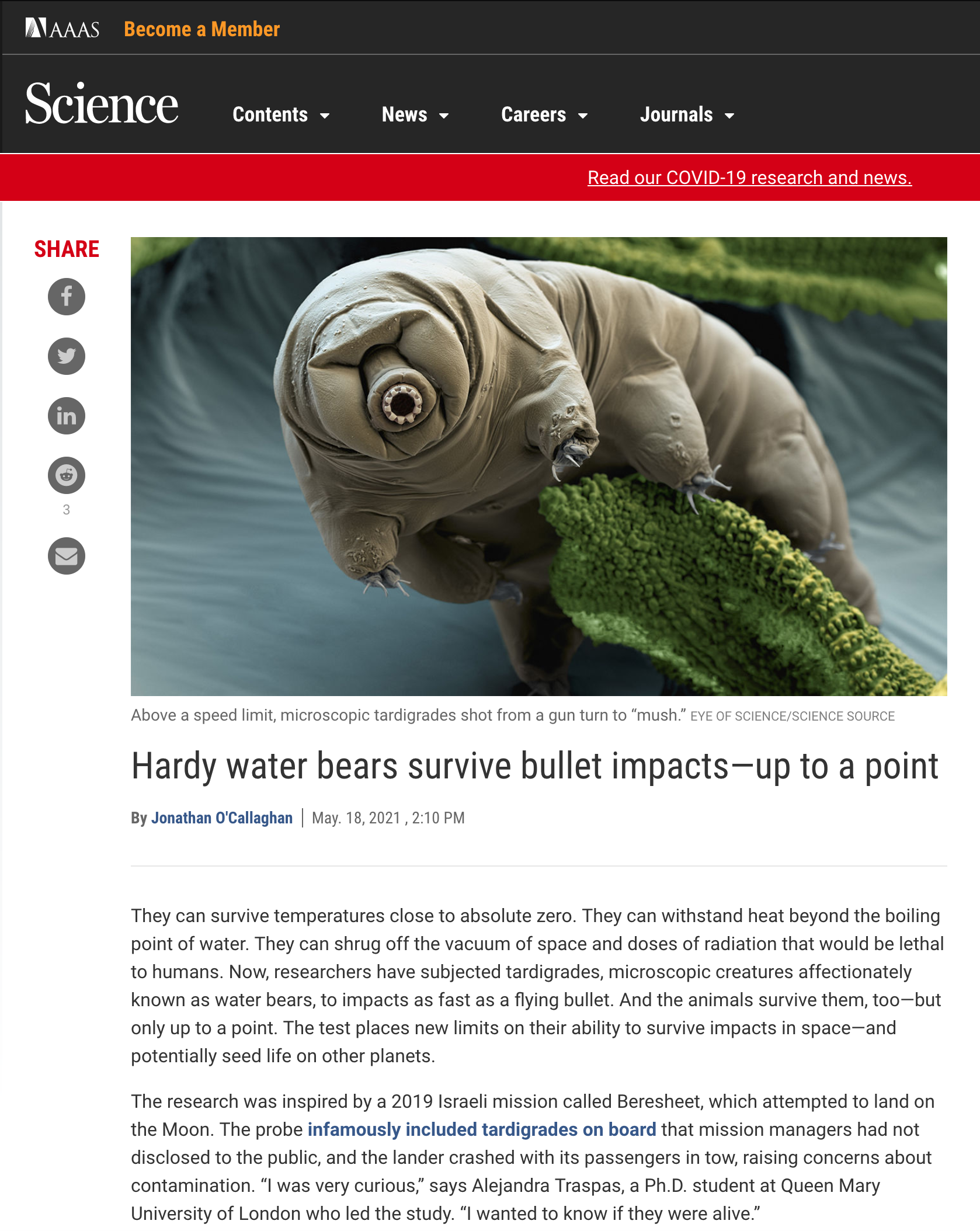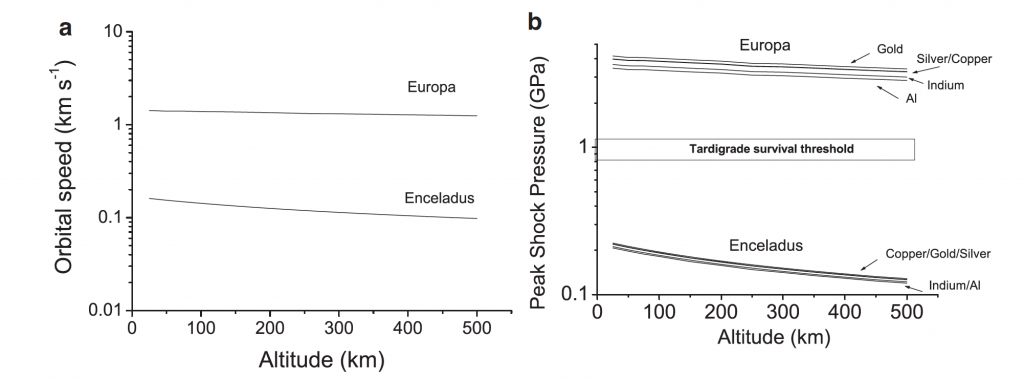
Tardigrade Survival Limits in High-Speed Impacts — Implications for Panspermia and Collection of Samples from Plumes Emitted by Ice Worlds (by Alejandra Traspas and Mark J. Burchell)
Summary of Research
The ability of tardigrades to survive impact shocks in the kilometer per second and gigapascal range was investigated. When rocks impact planetary surfaces, the impact speeds and shock pressures are in the kilometer per second and gigapascal range. This investigation tested whether tardigrades can survive in impacts typical of those that occur naturally in the Solar System. We found that they can survive impacts up to 0.9 km s−1, which is equivalent to 1.14 GPa shock pressure, but cannot survive impacts above this.

(a, b) Example tardigrades before impact testing. Tardigrades ranged in size from 150 to 850 μm. (c) Tardigrade recovered after an impact at 0.728 km s−1. (d) Tardigrade fragment from shot at 0.901 km s−1.
This is significantly less than the static pressure limit and has implications for tardigrade survival in panspermia models. The potential survival of tardigrades in impacts of terrestrial impact ejecta on the Moon is shown to be impossible for the average lunar impact speed of such ejecta. However, a notable fraction (around 40%) of such ejecta impact at vertical speeds low enough to permit survival. Similarly, martian impact ejecta striking Phobos, for example, at a typical impact speed will not permit viable transfer of tardigrade-like organisms, but if a fraction of such material had a lower impact speed, survival may be possible.

(a) Orbital speed vs. altitude at Europa and Enceladus. (b) Peak shock pressure on various metals as a function of altitude (note that within the resolution of the graphs the curves for several metals overlap). For Europa, all impacts produce pressures above the tardigrade survival limit, whereas for Enceladus impacts on all the metal surfaces are below the limit.
We also consider the implications of this for the collection of viable samples by spacecraft transiting the plumes of icy water worlds such as Europa and Enceladus. We have found the limit on survival of shocks to be around 1 GPa, which is instrumental in determining appropriate mission scenarios and collection methods for the acquisition of viable materials.
For more information please read the research article by Alejandra Traspas and Mark J. Burchell, which can be found here and the article discussing the work that appeared in Science.